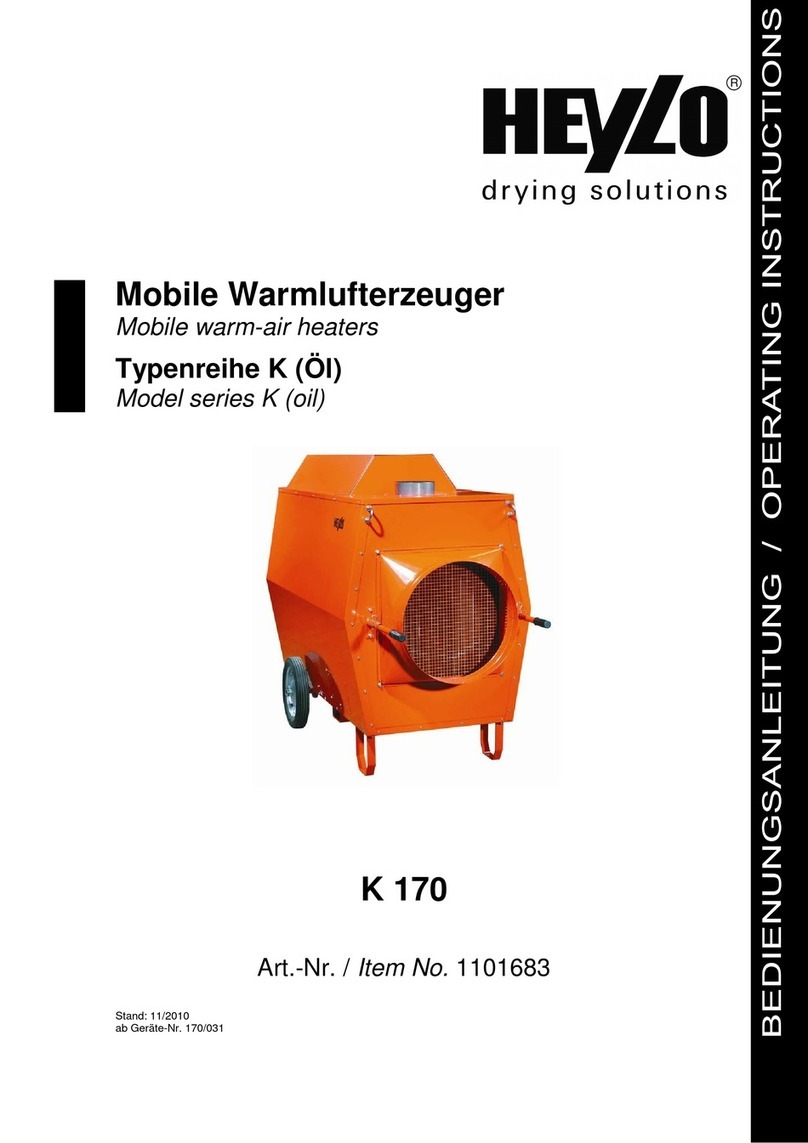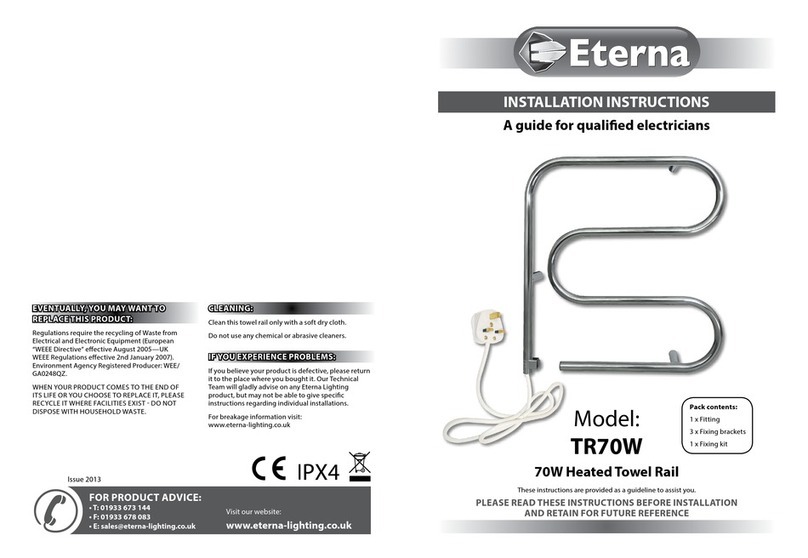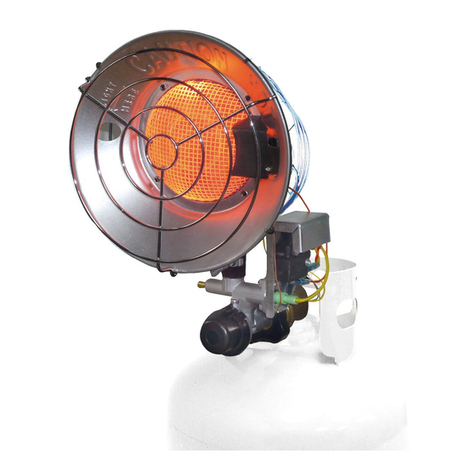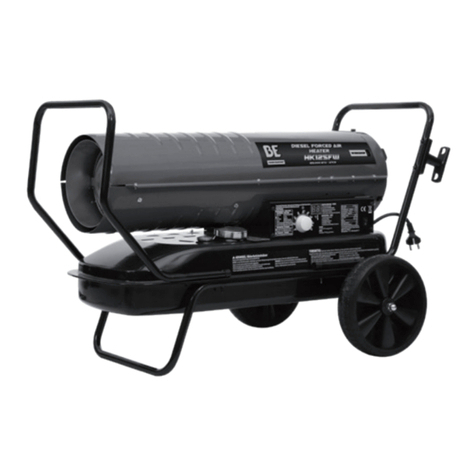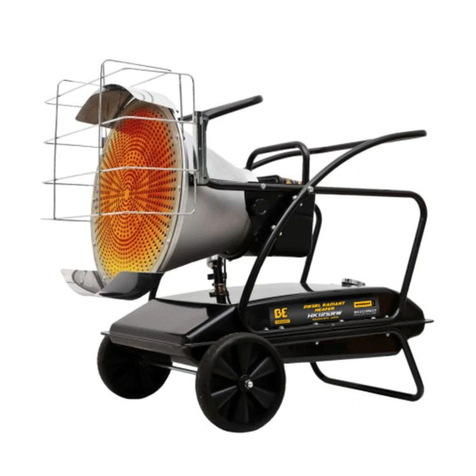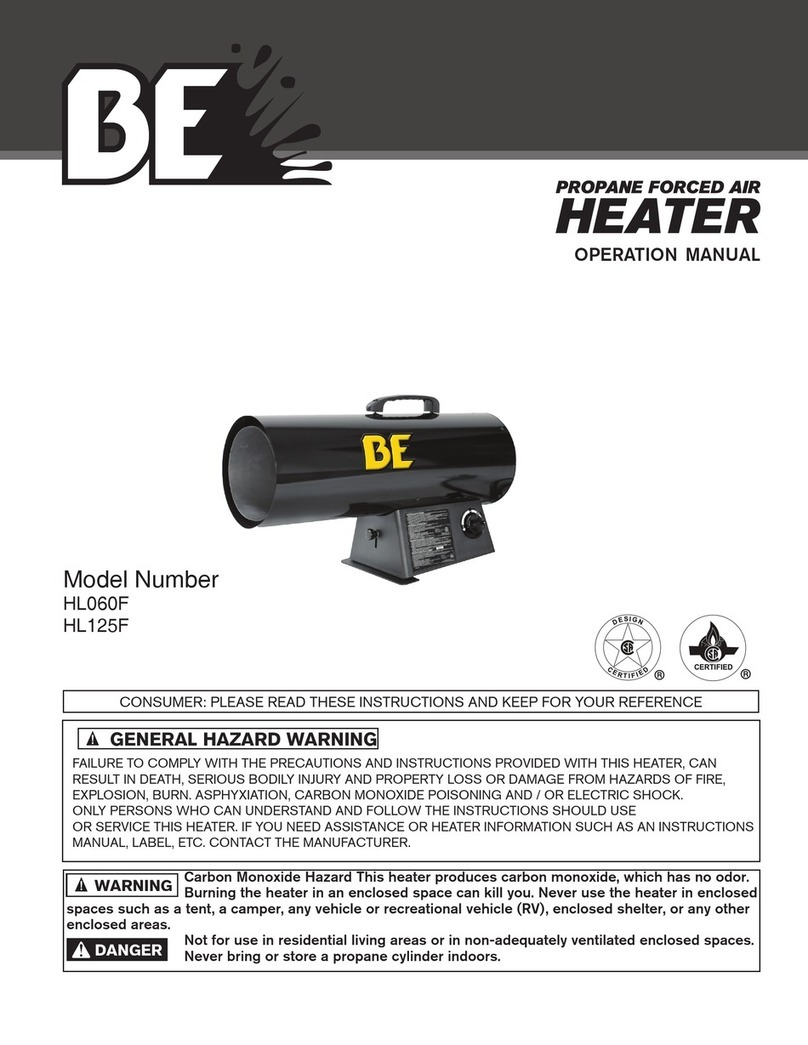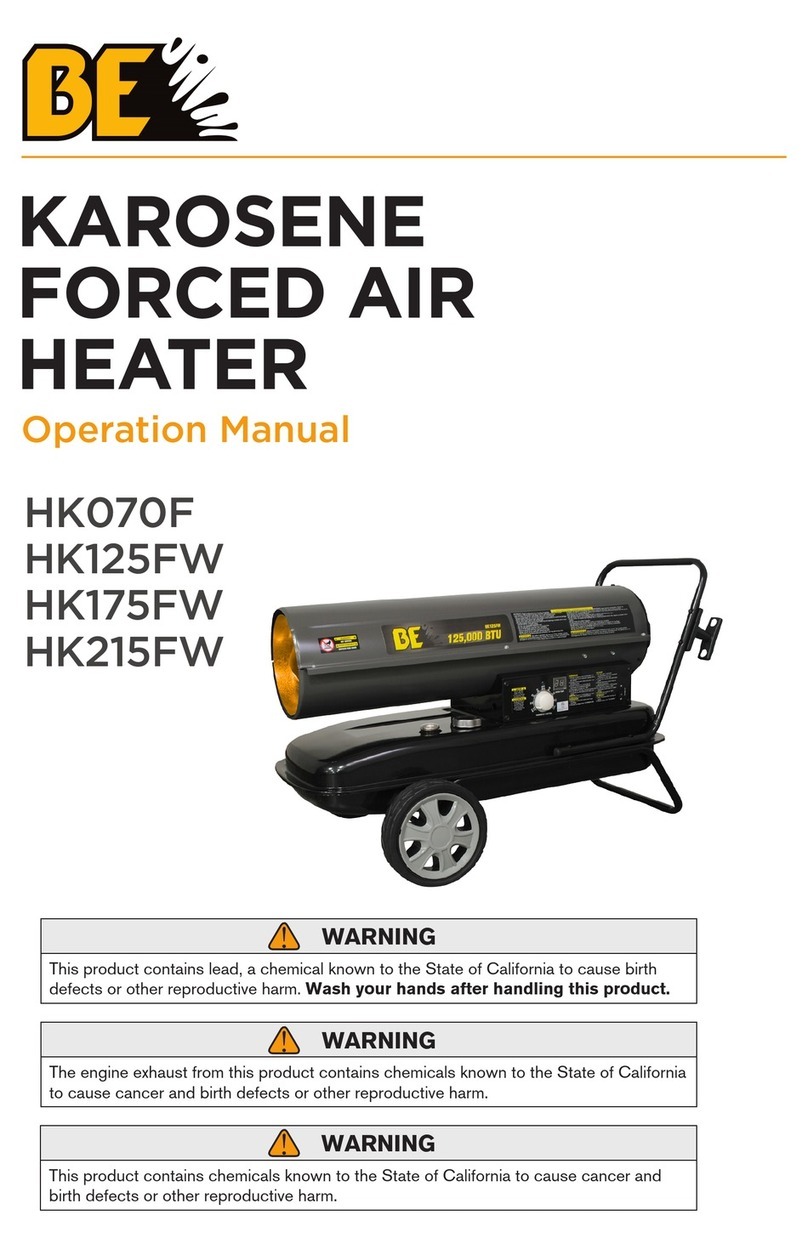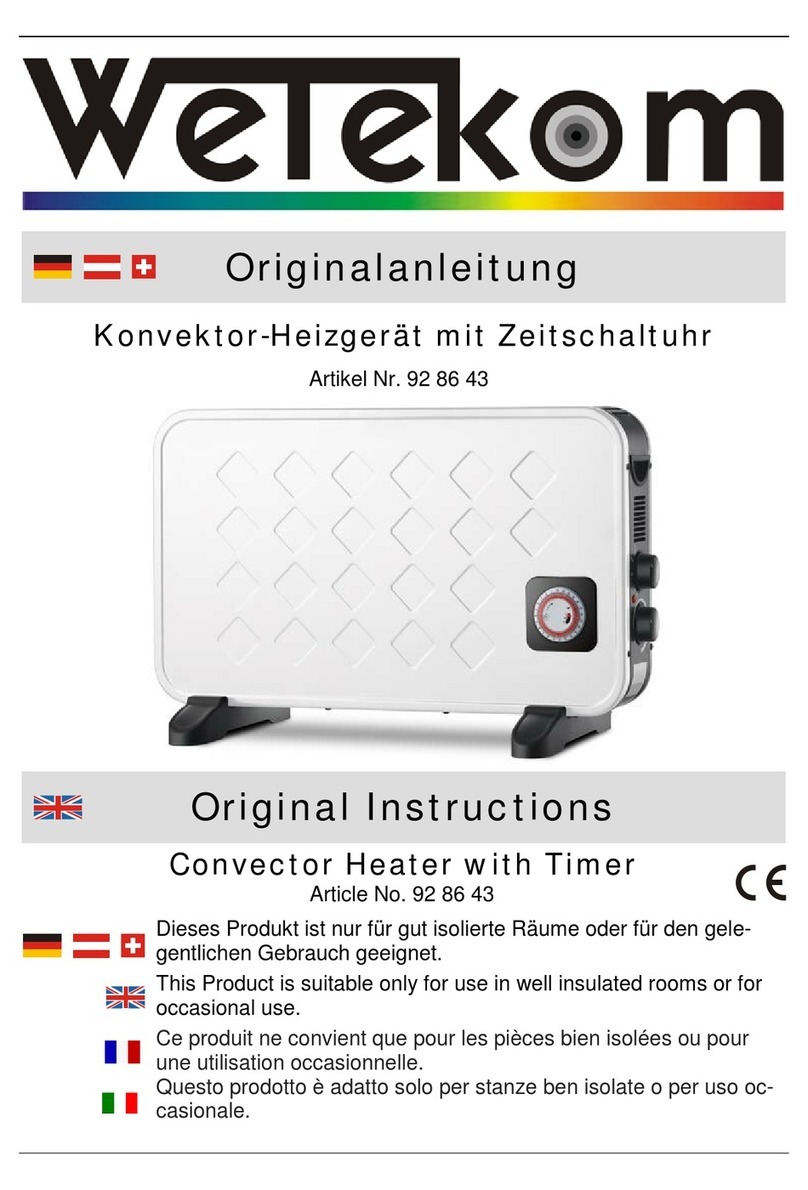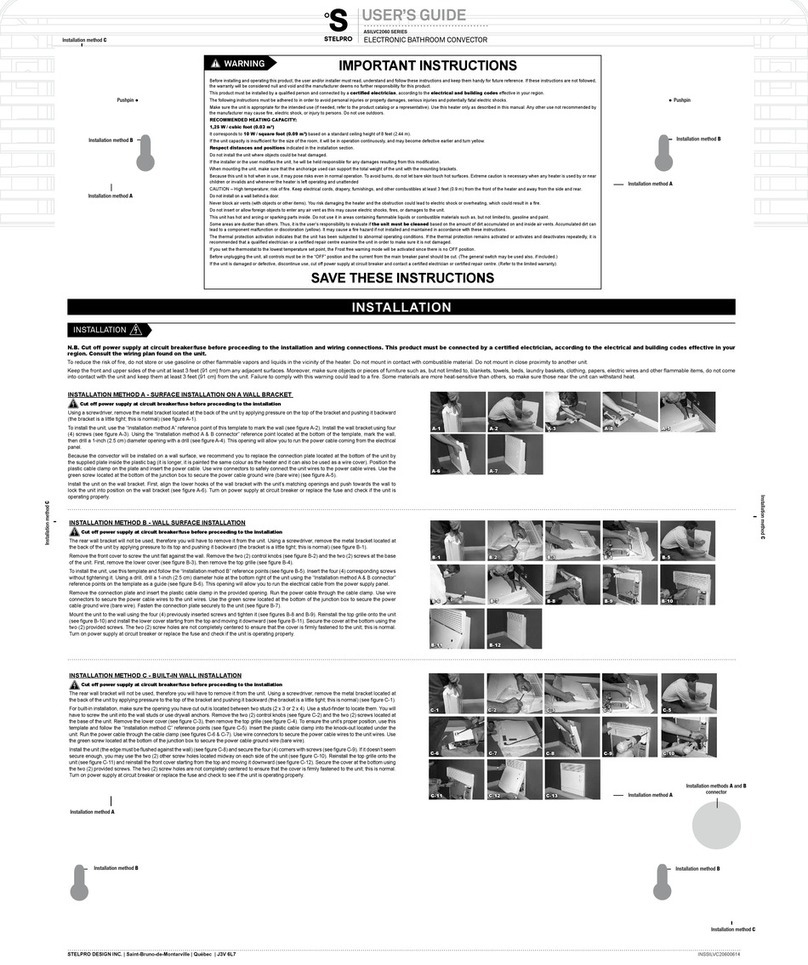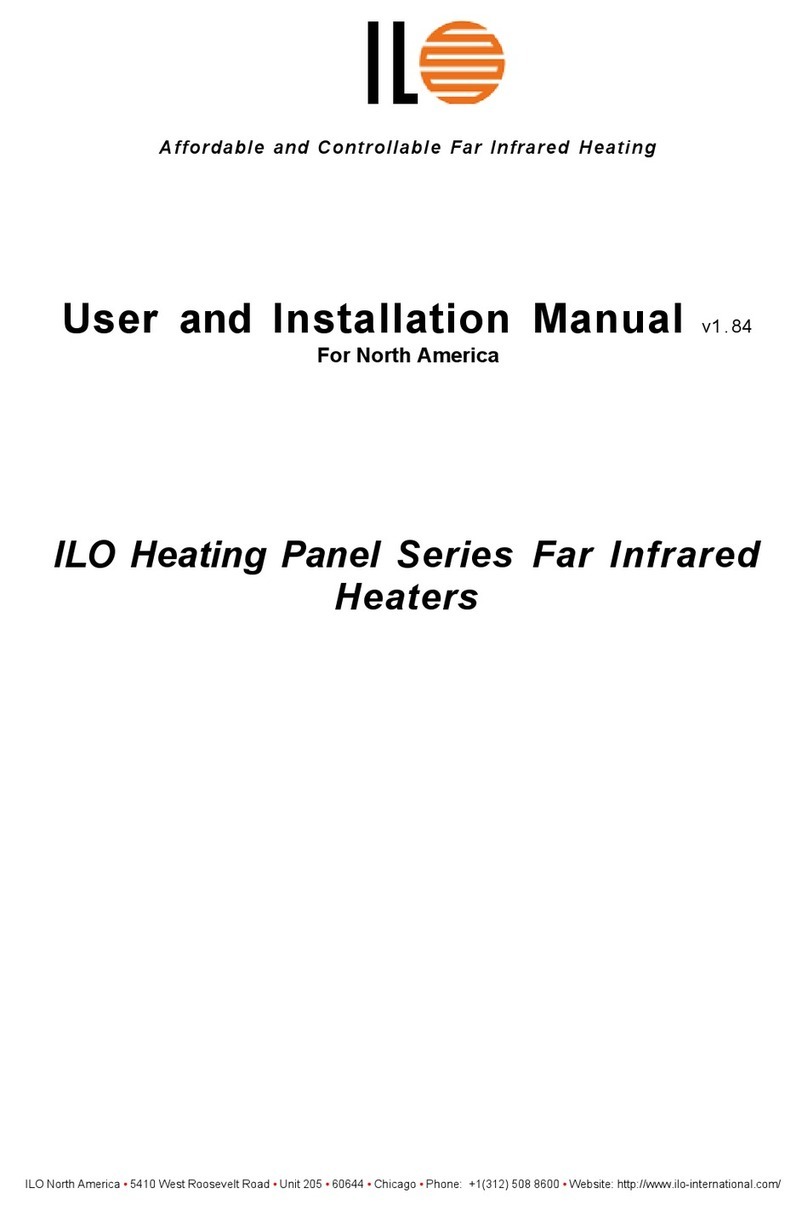
8
WARNING
• Heater be installed such that it is not directly exposed to water spray,
rain and/or dripping water.
• Not for home or recreational vehicle use.
• Combustible by-products produced when using this product contain
carbon monoxide, a chemical known to the state of California to
cause cancer ,birth defects, or other reproductive harm.
• The hose assembly shall be protected from traffic, building material
and contact with hot surfaces both during use and while in storage.
• Plug electrical cord into a properly grounded three-prong receptacle.
SAFETY PRECAUTIONS
• Children should be kept away.
• Always maintain proper clearance from combustible materials. Minimum
clearance should be: sides -2Ft, top -6Ft front -8Ft.
• The heater must be located at least: (i) 6 ft. (1.83 m) in the U.S.; or (ii)
10 ft. (3 m) in Canada, from any propane gas container.
• Always keep cylinder in upright position to provide for vapor withdrawal.
• The gas must be turned off at the propane supply cylinder when the
heater is not in use.
• Heater must be placed on level and solid footing.
• Never place anything, including clothes or other flammable items on
heater.
• Do not modify heater, or operate a heater that has been modified.
• Adequate clearance for accessibility, combustion and ventilation (air
supply) must be maintained at all times when heater is operating.
• Service and repair should be performed by a qualified service person.
The heater should be inspected before each use, and at least annually
by a qualified person. More frequent cleaning may be required as nec-
essary. Do not service heater while hot or operating.
• Never connect heater to an unregulated gas supply.
• This heater is shipped from the factory for use with LP (propane) gas
only. Do not convert to any other gas, Installation must conform to local
codes, or in their absence, with the standard for the storage and Han-
dling of Liquefied Petroleum Gases ANSI/NFPA 58 and the Natural Gas
and Propane Installation Code, CSA B149.1.
• Use only the regulator and hose assembly provided with this heater.
Inspect the regulator/hose assembly prior to each use of the heater. If
there is excessive abrasion or wear, or if the hose is cut, replace it with
the proper assembly shown in the parts list, prior to using the heater.
• Gas supply connections should be checked by using a 50/50 soap and
water solution. Never use a flame to check for gas leaks.
SAFETY








